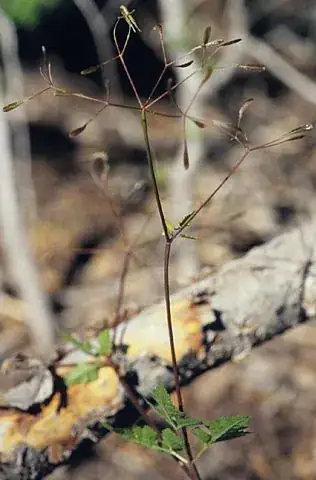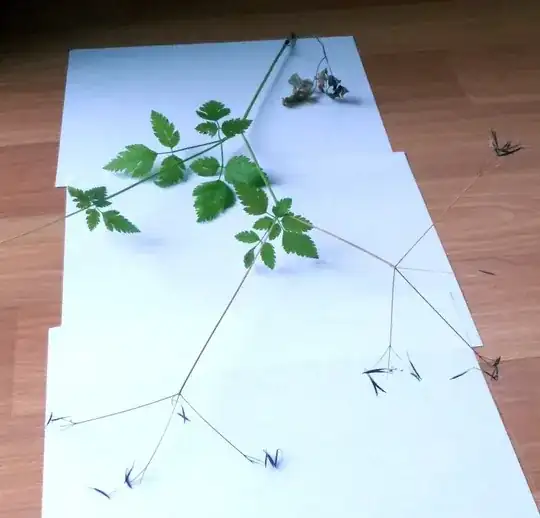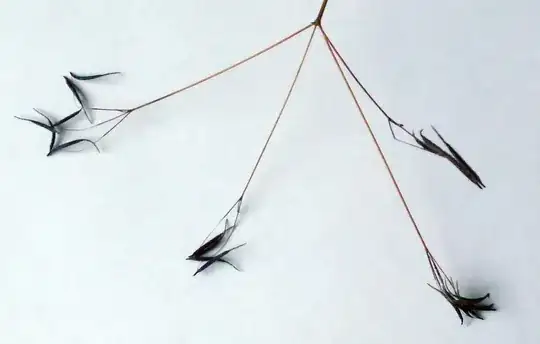The plant below has thin black seeds, almost needle-sharp, that are also slightly burred so their sides cling to fabric. Seeds maybe a half-inch long. It grows in medium shade (not deep shade) at forest edges, reaching maybe a foot or two high. It blooms in late spring, goes to seed in July in the Willamette Valley in Oregon. The flowers are small at the end of thin stems, and yellow if I recall correctly. Do you have an idea of what it might be?
2 Answers
After much poking about, I encountered the genus Osmorhiza. I now believe the plant in question is Osmorhiza berteroi (aka O. chilensis), commonly known as mountain sweet-cicely.
 (photo: Matt Lavin)
(photo: Matt Lavin)
There is a seed closeup here (scale is in mm), a good description with photos here, and more photos here.
It's possible that it is a different Osmorhiza species, such as O. purpurea or O. brachypoda, but I think it is most likelyO. berteroi. That species has flowers are white or greenish-white, so my vague memory of yellow flowers must have been incorrect.
- 349
- 1
- 5
- 11
I suspect it may be Bidens pilosa - that produces tuft like seed heads after the flowers, and each seed is hooked or barbed, images below
http://chalk.richmond.edu/flora-kaxil-kiuic/b/bidens_pilosa.html
The flowers,though, are small with small white petals surrounding a larger yellow centre.
- 131,823
- 3
- 72
- 162
-
There are some similarities, but the seeds make me think it's not B. pilosa, which has twin-pronged seeds that occur in a bomb-burst pattern, neither of which occur with the plant in question. It was worth checking and I looked through other Bidens spp., but I'm thinking it's not in the Bidens genus. – mgkrebbs Jul 27 '16 at 06:33


